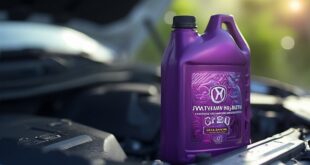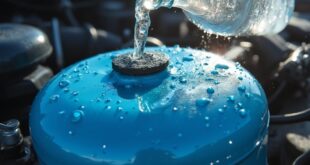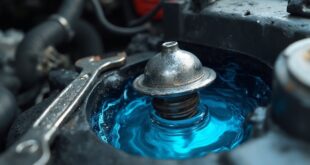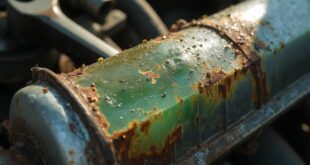To properly bleed your car's cooling system, start by raising the front of your vehicle and filling the coolant to the MAX line. Open any air bleed valves, then start the engine with the climate control set to max heat. Rev the engine briefly, observing the coolant flow, and close the bleed valves once air escapes. Finish by checking coolant levels and taking a test drive. There's more you can explore to guarantee your cooling system runs smoothly.
Understanding the Importance of Bleeding the Cooling System
When you neglect to bleed your car's cooling system, trapped air can lead to overheating and inefficient engine performance.
Air bubbles disrupt coolant flow, causing hot spots within the engine. This not only risks engine damage but can also result in costly repairs.
Additionally, an overheating engine can leave you stranded on the side of the road, creating unnecessary stress and inconvenience.
Regularly bleeding the cooling system guarantees peak performance and longevity of your vehicle.
Methods for Bleeding the Cooling System
To guarantee your car's cooling system operates efficiently, you'll need to choose the right method for bleeding it.
You can opt for the old manual method, which uses air bleed valves if your vehicle has them. This method is straightforward but may take longer.
Alternatively, consider the vacuum method, which requires a vacuum tool and compressed air. This method quickly removes air and fills the system with coolant, ensuring effective results. You can find vacuum tools easily online.
Assess your needs and tools available to determine which method works best for you and your car's cooling system.
Step-by-Step Guide for the Old Manual Method
If you decide to go with the old manual method for bleeding your car's cooling system, you'll find it straightforward, especially if your vehicle has air bleed valves. Here's a quick step-by-step guide:
| Step | Action |
|---|---|
| Step 1 | Prepare coolant and raise the front of the car. |
| Step 2 | Fill coolant to MAX and open air bleed valves. |
| Step 3 | Start the engine and set climate control to MAX heat. |
| Step 4 | Rev engine, monitor coolant flow, and close bleed valves. |
Follow these steps carefully for effective air removal and coolant circulation.
Utilizing the Vacuum Method for Efficiency
While the old manual method can be effective, using the vacuum method for bleeding your car's cooling system greatly enhances efficiency and reliability.
This method employs a vacuum tool to quickly eliminate air, allowing coolant to fill the system seamlessly. You'll need an air compressor to operate the vacuum tool, which you can easily find online or at auto parts stores.
Post-Bleeding Procedures and Maintenance
After successfully bleeding your cooling system, it's important to follow up with some key post-bleeding procedures to confirm everything runs smoothly.
Here's what you should do:
- Rev the engine to 3000-4000 RPM and watch for coolant flow.
- Carefully open bleed valves to release any trapped air.
- Refill coolant as needed, making sure the engine reaches 90°C.
- Take a test drive, monitoring for leaks and overheating.
These steps help confirm your cooling system functions properly.
Don't forget to recheck the coolant level after your drive and repeat if necessary for peak performance!
Frequently Asked Questions
How Often Should I Bleed My Car's Cooling System?
You should bleed your car's cooling system whenever you notice overheating, after replacing coolant, or if you've opened the system for repairs. Regular checks can help prevent air buildup and guarantee efficient engine performance.
Can I Use Water Instead of Coolant for Bleeding?
You shouldn't use water instead of coolant for bleeding. Water lacks the necessary additives to prevent corrosion and overheating. Always stick to the manufacturer-recommended coolant for ideal engine performance and longevity.
What Are Symptoms of an Air-Locked Cooling System?
If you've got an air-locked cooling system, you might notice overheating, fluctuating temperature gauges, or poor heater performance. You'll likely hear gurgling sounds, too, indicating trapped air that needs to be addressed.
Is Bleeding Necessary After Replacing Coolant?
Yes, bleeding's necessary after replacing coolant. It guarantees any trapped air escapes, preventing overheating and maintaining proper circulation. Skipping this step might lead to engine issues, so always take the time to bleed it.
Can I Bleed the Cooling System Without a Lift?
You can bleed the cooling system without a lift. Just raise the front of your car using jack stands, making it easier to release trapped air. Follow the bleeding steps carefully for effective results.
 Car Service Land Coupons for Oil change, Tires, Wheel alignment, Brakes, Maintenance
Car Service Land Coupons for Oil change, Tires, Wheel alignment, Brakes, Maintenance




